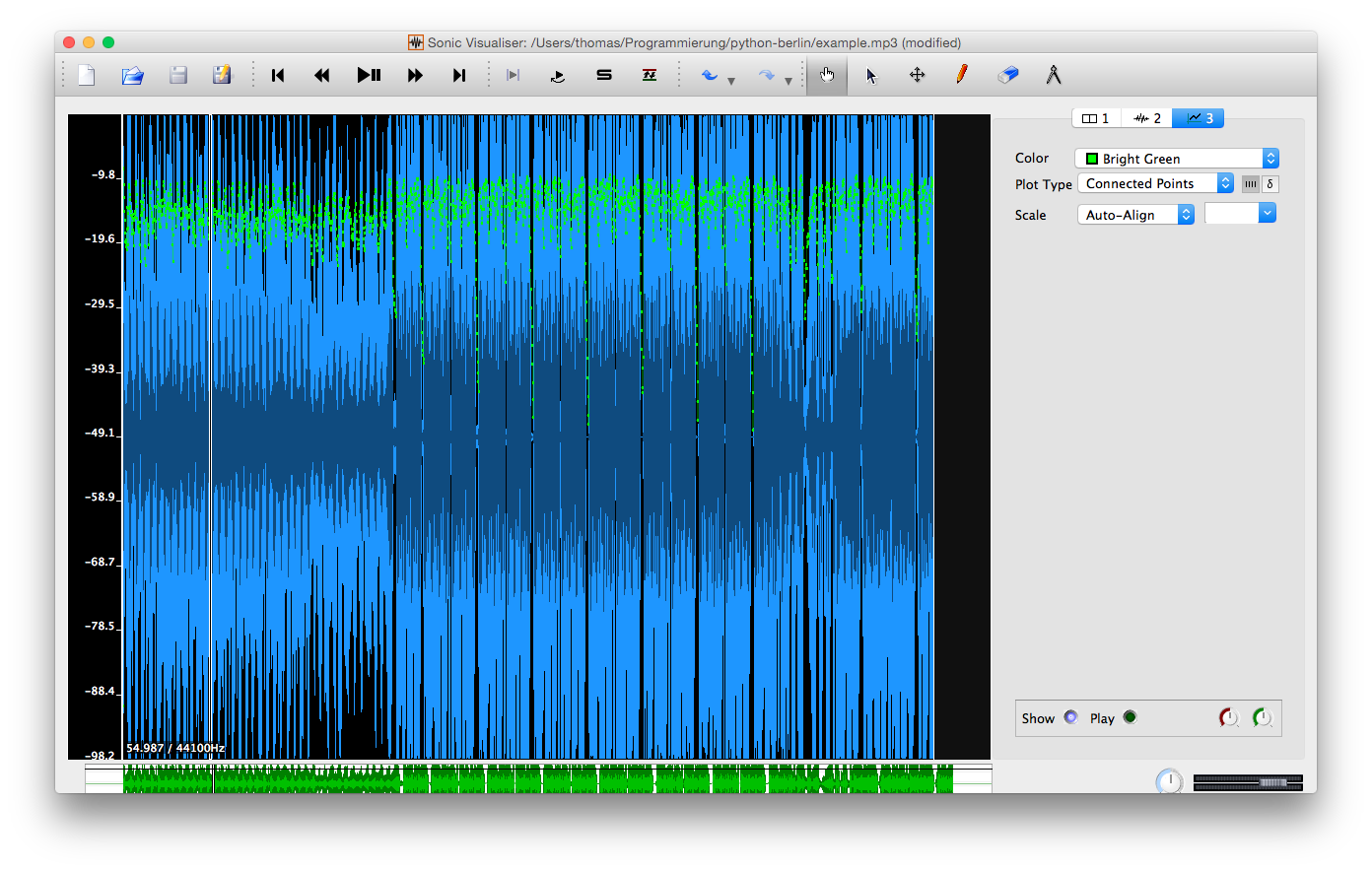Python Users Berlin Meetup June 2015
Lightning Talk by Thomas Walther - thomaswa@ccrma.stanford.edu
- Use Sonic Visualiser to explore, play with and choose audio feature extraction algorithms
- Use Essentia and Python to quickly get a production-ready implementation
This repository contains the iPython notebook of the lightning talk, where we applied the Vicker's Loudness feature extractor to an audio file, to get a good representation of the volume of the track at a point in time. We started by testing the Vicker's Loudness algorithm in Sonic Visualiser, and then re-created it with Essentia in the iPython notebook.
Essentia is an audio feature extraction library for C++ and Python. It is being actively developed by the Music Technology Group at the Universidad Pompeu Fabra in Barcelona.
To my knowledge, it's the best open-source audio feature extraction library out there. It contains a plethora of algorithms, great documentation with links to the original papers, is stable, actively developed and extremely fast. Implementations are done in C++, and the Python wrappers use a lot of numpy. Python is a first-class citizen in Essentia, not just a half-hearted add-on (i.e., very much unlike OpenCV, where the Python bindings are always behind the C++ code).
Audio Feature Extraction. That means getting some information out of audio, like loudness, variance, pitch, tempo.
Audio effects. This is not a library for applying delay, reverb, chorus, distortion etc.
Affero GPL3. That's GPL3, with the additional constraint that if you modify it and deploy it to a server, you have to share your source code, too (not only when you deploy it to an end user).
A great tool from Queen Mary University in London for visualizing audio and audio feature extractors. See http://www.sonicvisualiser.org
Music Software Developer, Stanford CCRMA graduate (Center for Computer Research in Music and Acoustics), working on audio DSP and server backends. http://www.thomas-walther.com
